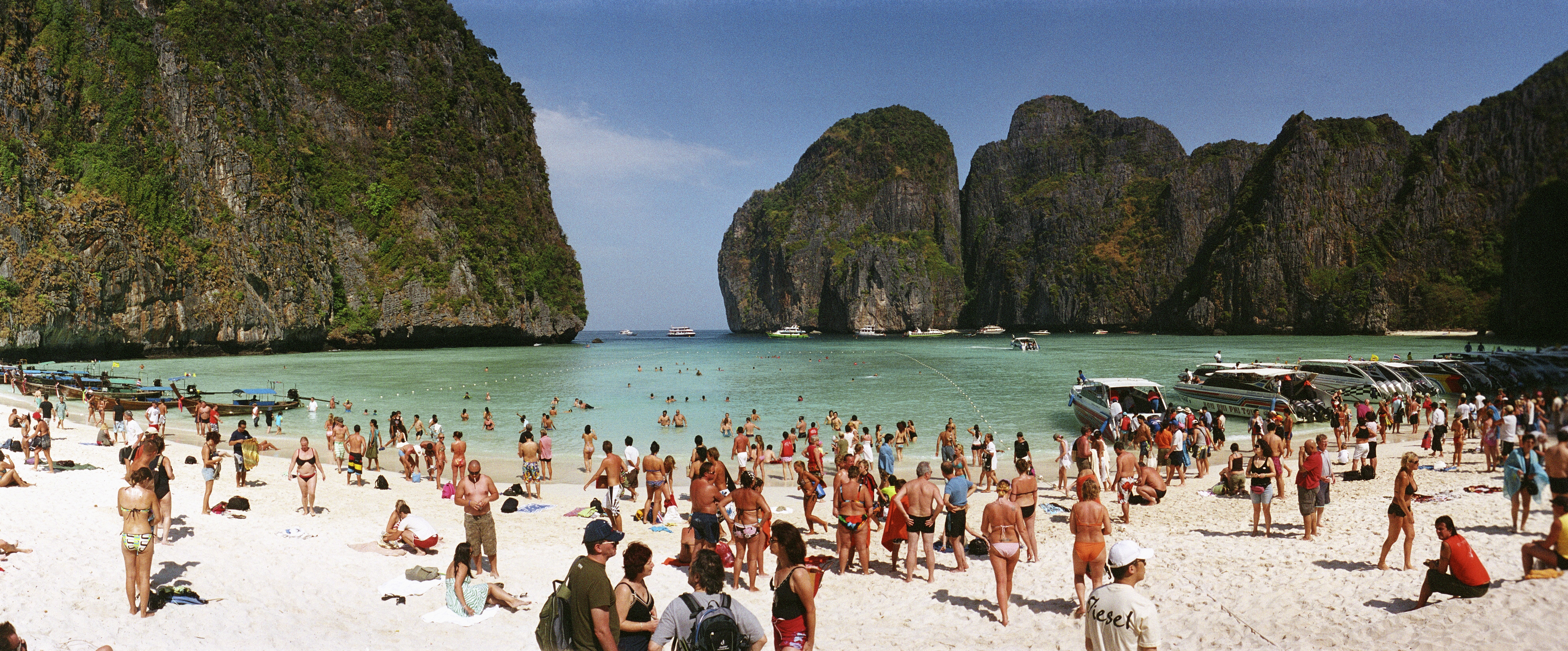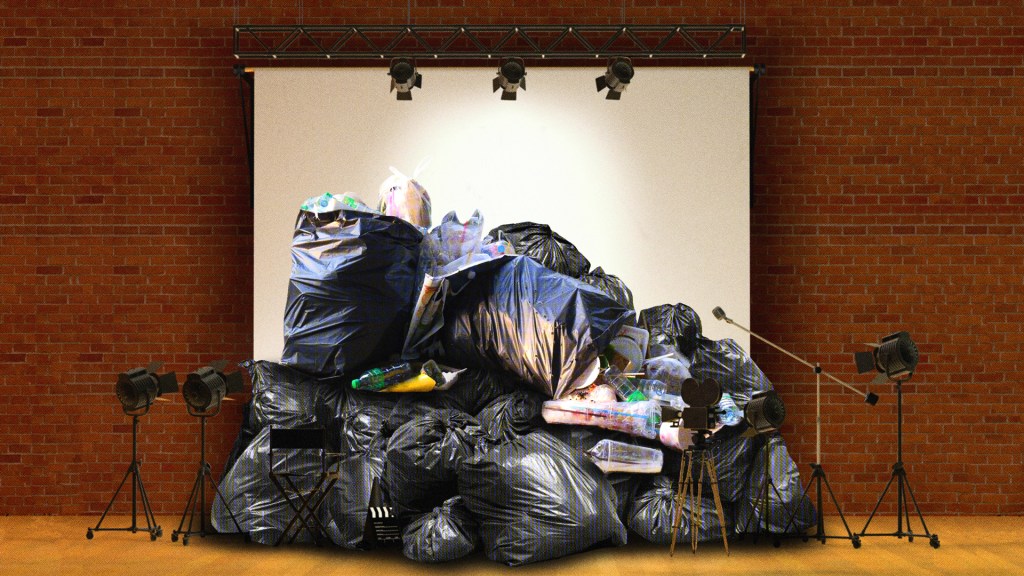Until it goes off the rails, Danny Boyle’s 2000 film The Beach seems like just another cliché story about a Westerner traveling in Southeast Asia. Leonardo DiCaprio stars as Richard, a young, white, seemingly well-off American who goes to Thailand in search of the ephemeral sense of exploration that—according to the logic of young, white, well-off Westerners who do this sort of trip—can only be brought about through idealized notions of Southeast Asia and its potential for rugged adventure. When Richard and his traveler friends find the pristine island, locals grant them permission to stay under the condition that they’ll keep the beach secret, so as to not disturb the lives of the people living there. Richard, of course, breaks their trust and tells others about the island, leading to a mess of lies, deaths, and the demise of their “perfect” community.
Despite the film’s notable casting of DiCaprio in the midst of his post-Titanic fame, The Beach was critically panned. Written off as jumbled, navel-gazing, and overreaching, it has a critic score of only 20 percent on Rotten Tomatoes, and it holds the spot as Boyle’s single worst-received endeavor. Twenty years later, those marks haven’t lifted.
Videos by VICE
But The Beach‘s message has picked up new resonance in the age of influencer culture. The controversy around The Beach and its local environmental effects only served to foreshadow a common theme in the news today; not only did the film depict the corruption of a little-known Thai paradise, but it also led to the real-life destruction of the beach where it was filmed, and over the past few years, as content-hunters and “digital nomads” have taken over our feeds, a similar situation has played out globally in destinations that were once unspoiled. Through the lens of 2020, DiCaprio’s Richard is just another influencer in Thailand, living with little regard for the lives of locals and wreaking havoc on remote locations as he takes in experiences for the sake of aspirational “adventure.” Back when The Beach was set, he just didn’t have a cell phone to blast his every move for likes and clout.
When Boyle and crew headed to Thailand to film The Beach, they chose the island of Ko Phi Phi Le’s Maya Bay for its most iconic scenes. From there, the damage that ensued from the film’s production happened in phases: First, they had to make Maya Bay look like a tropical destination worthy of wooing a Western tourist. In 1999, before the film had even been released, The Guardian‘s John Vidal wrote that trouble was already afoot; the location—despite Maya Bay having been located in a “pristine” national park—didn’t meet the standards Boyle’s team had in mind at the time, and with permission from the Thai government, The Beach crew worked to change the landscape without consultation by environmentalists or locals who relied on the area for tourism. They removed bushes, despite warnings that they were necessary for preventing erosion, and planted palm trees in their place; they cleared land to widen the beach. DiCaprio and Fox, who distributed the film, assured locals that everything would be okay.
After The Beach finished filming, the effects of that redesign were worse than the filmmakers expected, according to Vidal. Without those bushes, the sand eroded after a series of storms. Plants from the area were relocated, but soon died anyway, as did the sea coral.
Despite the movie’s tepid critical reception, however, its portrayal of the beautiful beach caused a boom in tourism. For the next 18 years, more than 300 boats carried 5,000 tourists into Maya Bay each day, according to the South China Morning Post. The constant flow of tourists and power boats killed reefs and fish and scared off the local birds. “We inherited a 100 percent dead ecosystem,” coral conservationist Anuar Abdullah told the SCMP.
Uncanny as it may be, that destructive flux of tourism is almost exactly what The Beach cautioned against. In March 2018, after close to two decades of damage, Thailand’s National Parks and Wildlife Department announced that it would close Maya Bay to tourists for four months every year in order to bring back balance to the island’s coral reefs and marine life. As of December, Thailand had extended its closure for two more years. Once conservationists rebuilt coral gardens in the bay, animal life including sharks, fish, and birds began to return. “When you take the human factor out, nature thrives,” Abdullah told the SCMP.
Overtourism in Maya Bay predated social media, but in the age of travel vlogs and geotags, a similar story is playing out across the world. While a DiCaprio flick might have been needed to spur big travel buzz in the early 00s, anyone on Instagram or YouTube can now serve as #goals. Social media expedites the problem, prompting huge amounts of interest in destinations that aren’t prepared for an onslaught of tourism.

After decades of disarray caused by careless tourists, the Philippines temporarily closed the major beach destination of Boracay in 2018. Last year, the Indonesian government considered banning tourists from Komodo Island in an attempt to conserve Komodo dragon populations, and Instagrammers were blamed for damaging the wildlife at California’s Antelope Valley California Poppy Reserve by veering off-trail for the perfect shot.
It’s no surprise that publications from Travel + Leisure to Conde Nast Traveler to the New York Times have questioned whether the geotag and the Instagram travel photo may be ruining the world’s natural wonders. Since 2018, the Leave No Trace Center for Outdoor Ethics has listed social media best practices for the outdoors, and in the modern version of the locals’ plea to Richard in the beach, some destinations now ask that visitors refrain from geotagging locations.
“If outdoor enthusiasts stop and think about the potential impacts and associated consequences of a particular action, it can go a long way towards ensuring protection of our shared outdoor spaces,” the Leave No Trace guidelines read. “To that end, we encourage outdoor enthusiasts to stop and think about their actions and the potential consequences of posting pictures, GPS data, detailed maps, etc. to social media. Furthermore, we urge people to think about both the protection and sustainability of the resource and the visitors who come after them.”
Twenty years later, most Americans might not remember The Beach or think of Maya Bay as anything more than a fleeting vacation idea. For locals, however, The Beach‘s effects are only now beginning to fade. Perhaps the most horrifying and the most memorable thing about the movie is how much it still speaks to our own capacity to take a beautiful thing and completely destroy it.






